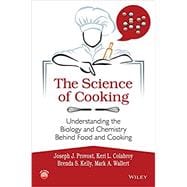The first textbook that teaches biology and chemistry through the enjoyable and rewarding means of cooking
The Science of Cooking is a textbook designed for nonscience majors or liberal studies science courses, that covers a range of scientific principles of food, cooking, and the science of taste and smell. It is accompanied by a companion website for students and adopting faculty. It details over 30 guided inquiry activities covering science basics and food-focused topics, and also includes a series of laboratory experiments that can be conducted in a traditional laboratory format, experiments that can be conducted in a large class format, and take-home experiments that can be completed with minimal equipment at the student’s home. Examples of these engaging and applicable experiments include fermentation, cheese and ice cream making, baking the best cookies, how to brown food faster, and analyzing food components. They are especially useful as a tool for teaching hypothesis design and the scientific process.
The early chapters of the text serve as an introduction to necessary biology and chemistry fundamentals, such as molecular structure, chemical bonding, and cell theory, while food-based chapters cover:
- Dairy products (milk, ice cream, foams, and cheeses)
- Fruits and vegetables
- Meat and fish
- Bread
- Spices and herbs
- Beer and wine
- Chocolate and candies
The Science of Cooking presents chemistry and biology concepts in an easy-to-understand way that demystifies many basic scientific principles. For those interested in learning more science behind cooking, this book delves into curious scientific applications and topics. This unique approach offers an excellent way for chemistry, biology, or biochemistry departments to bring new students of all levels and majors into their classrooms.








